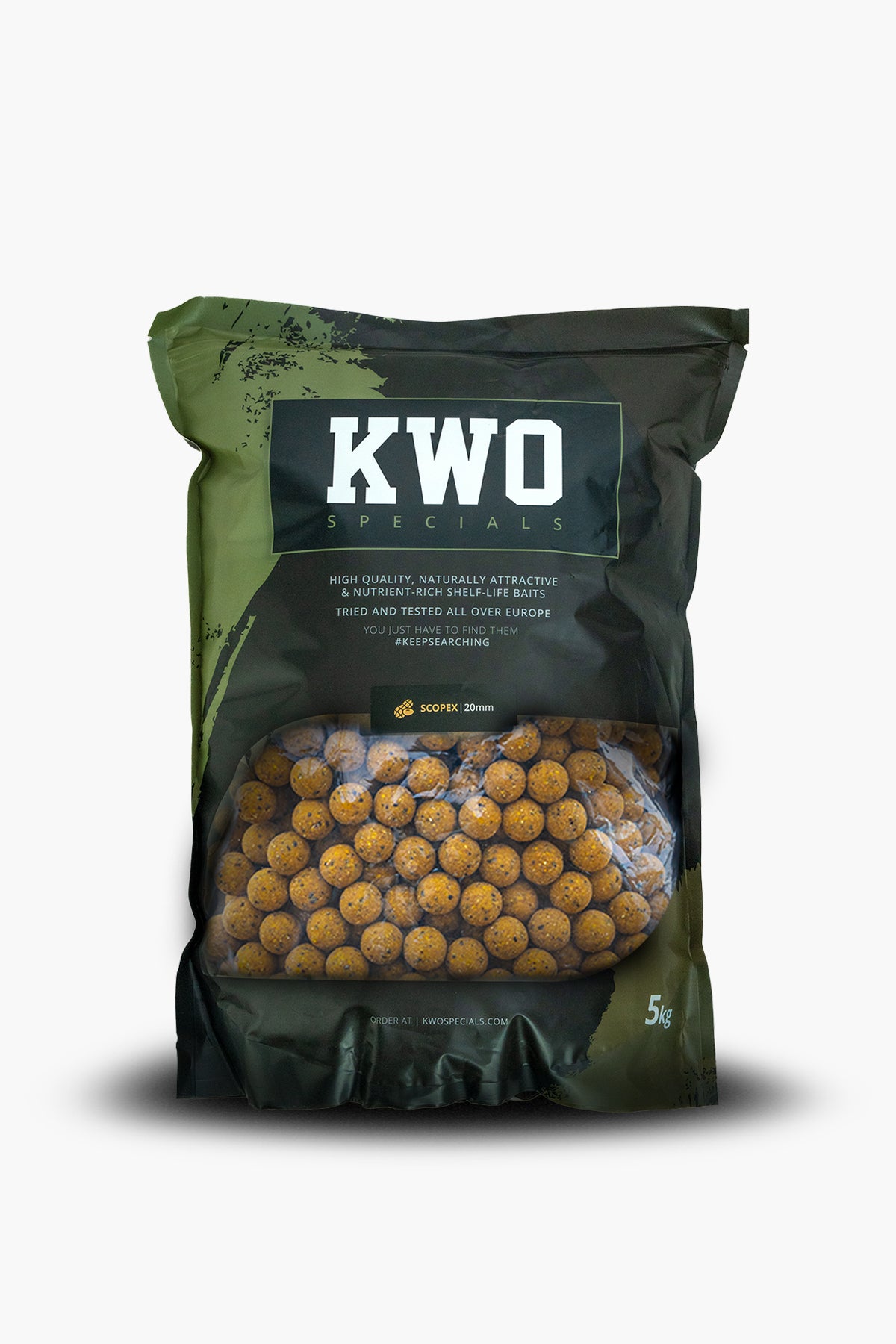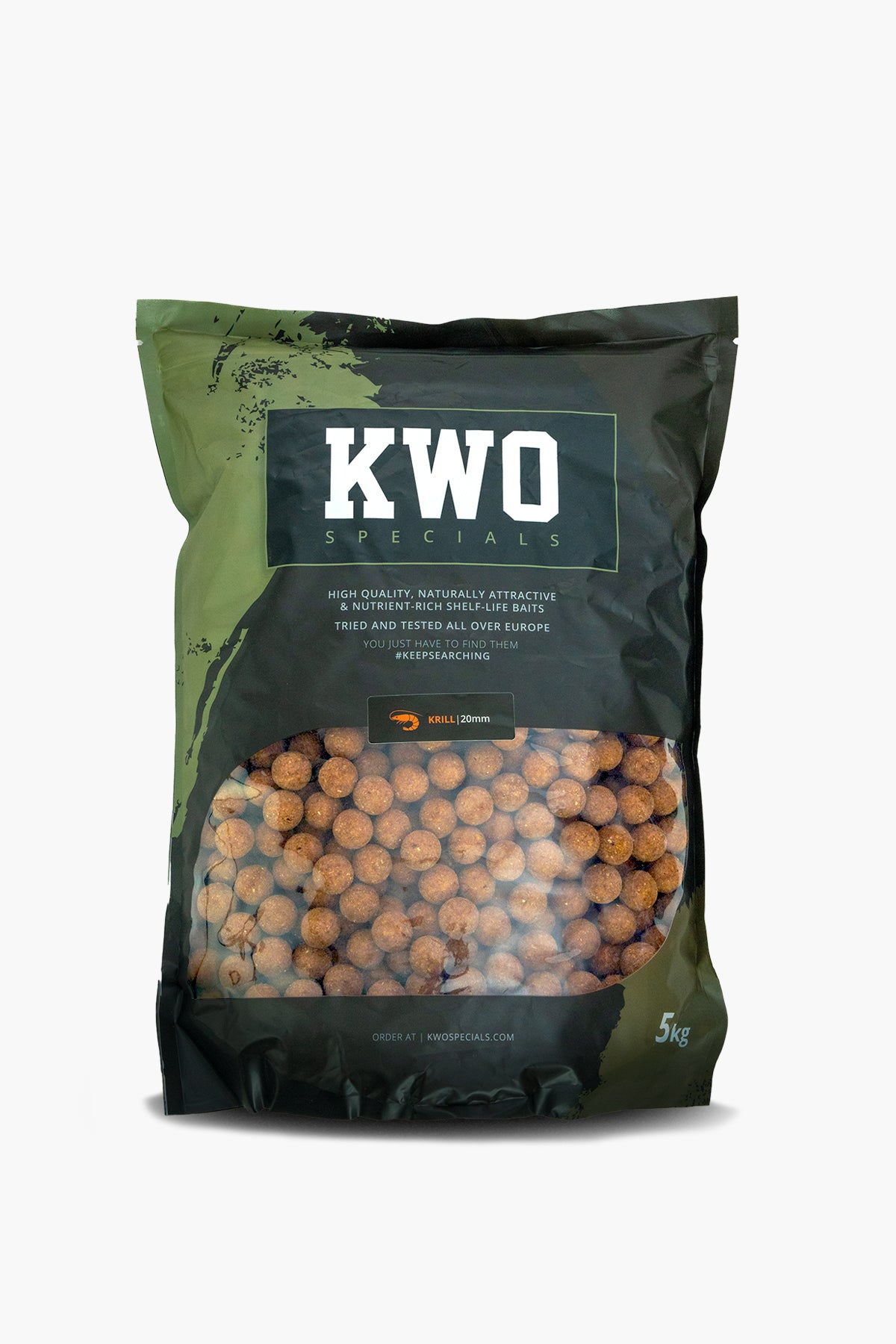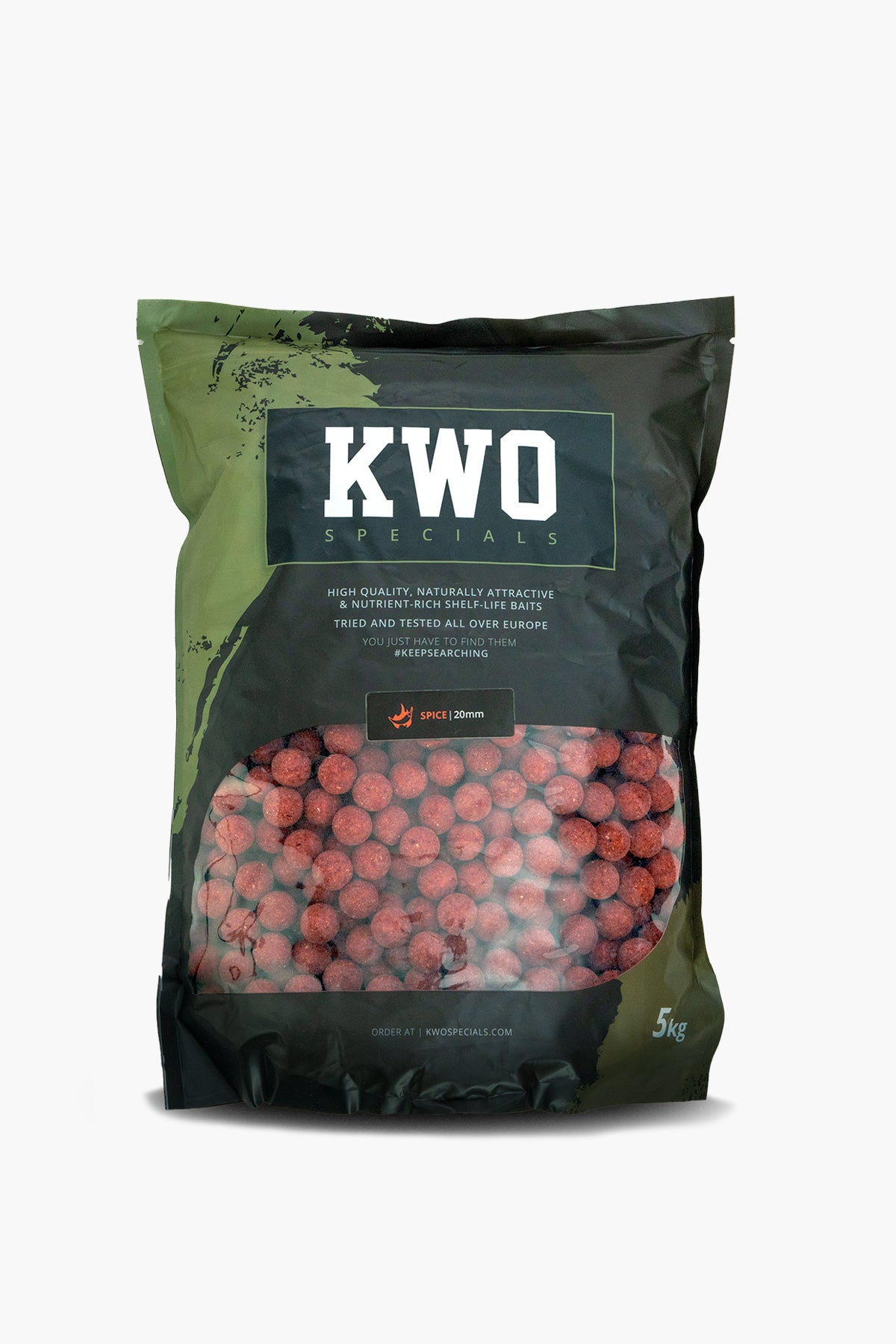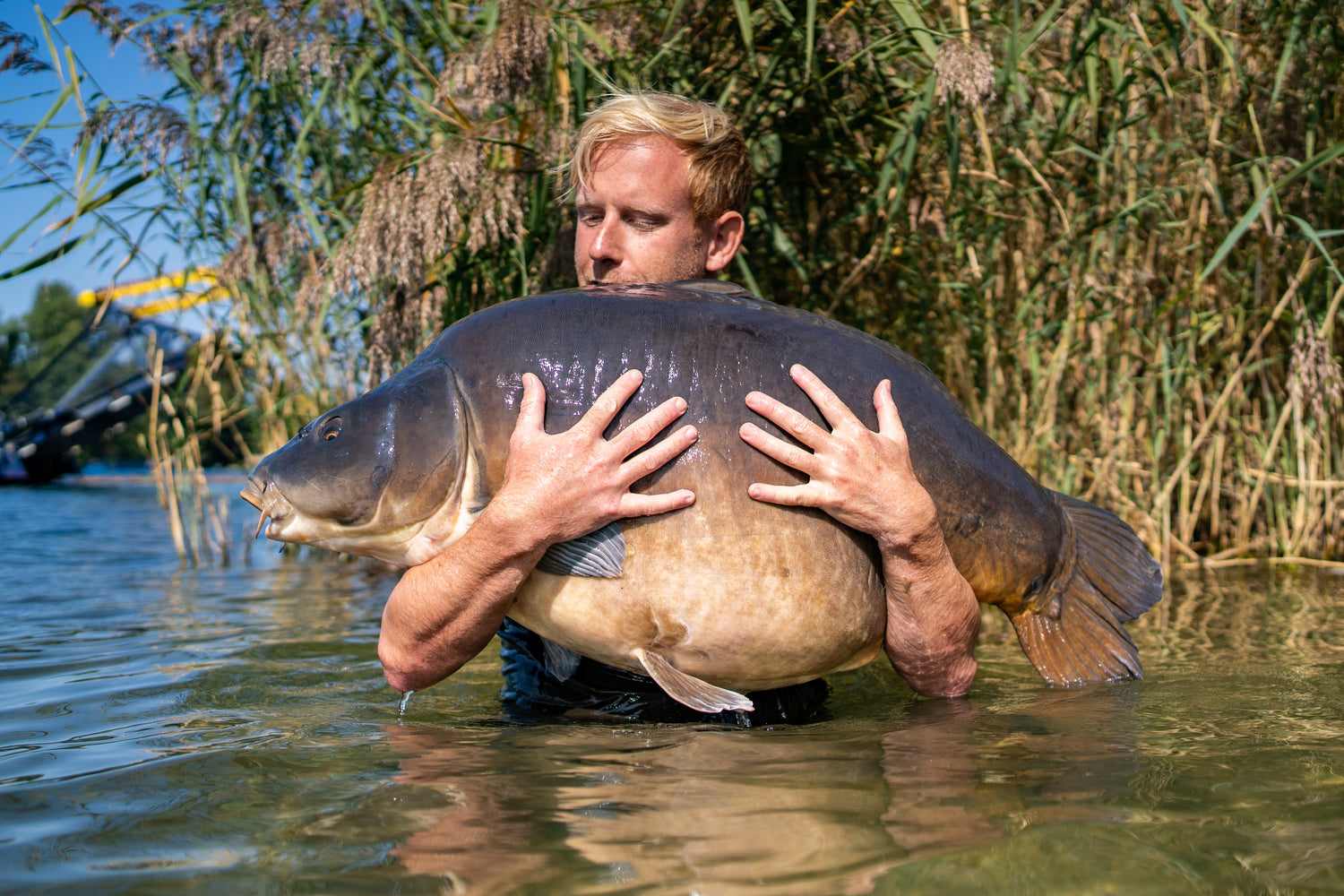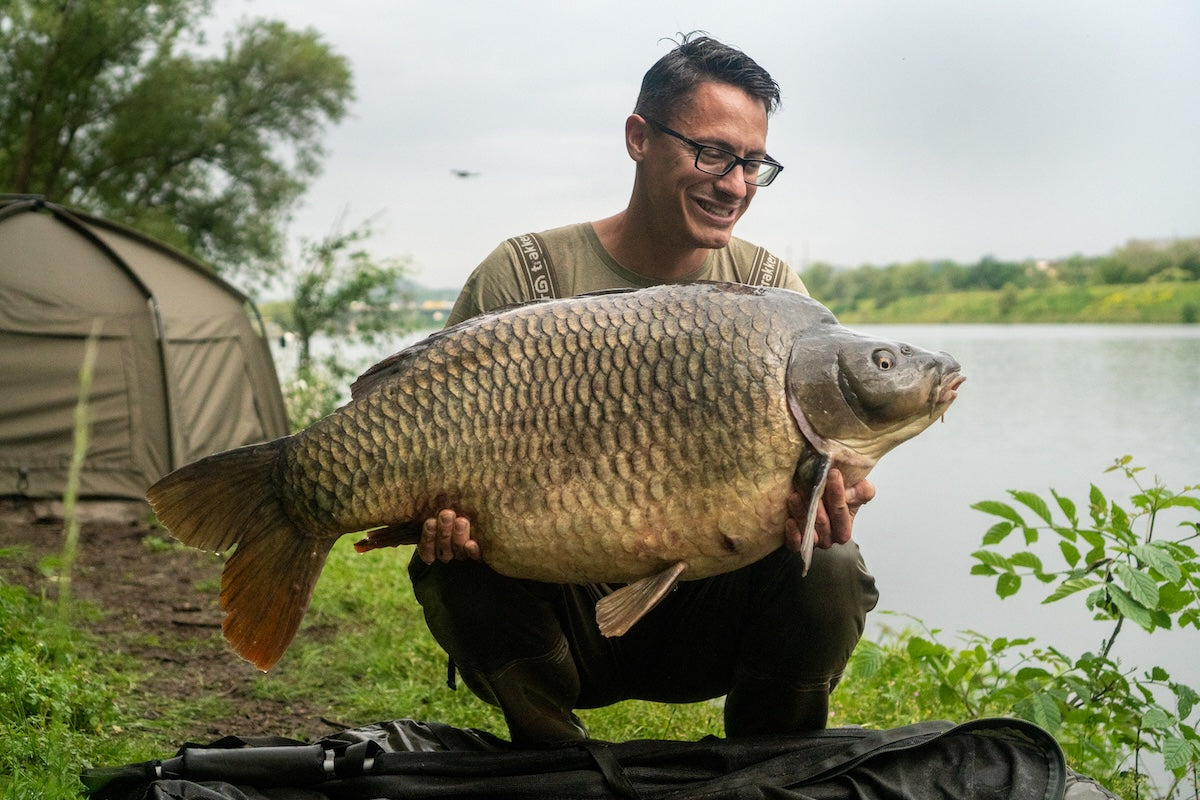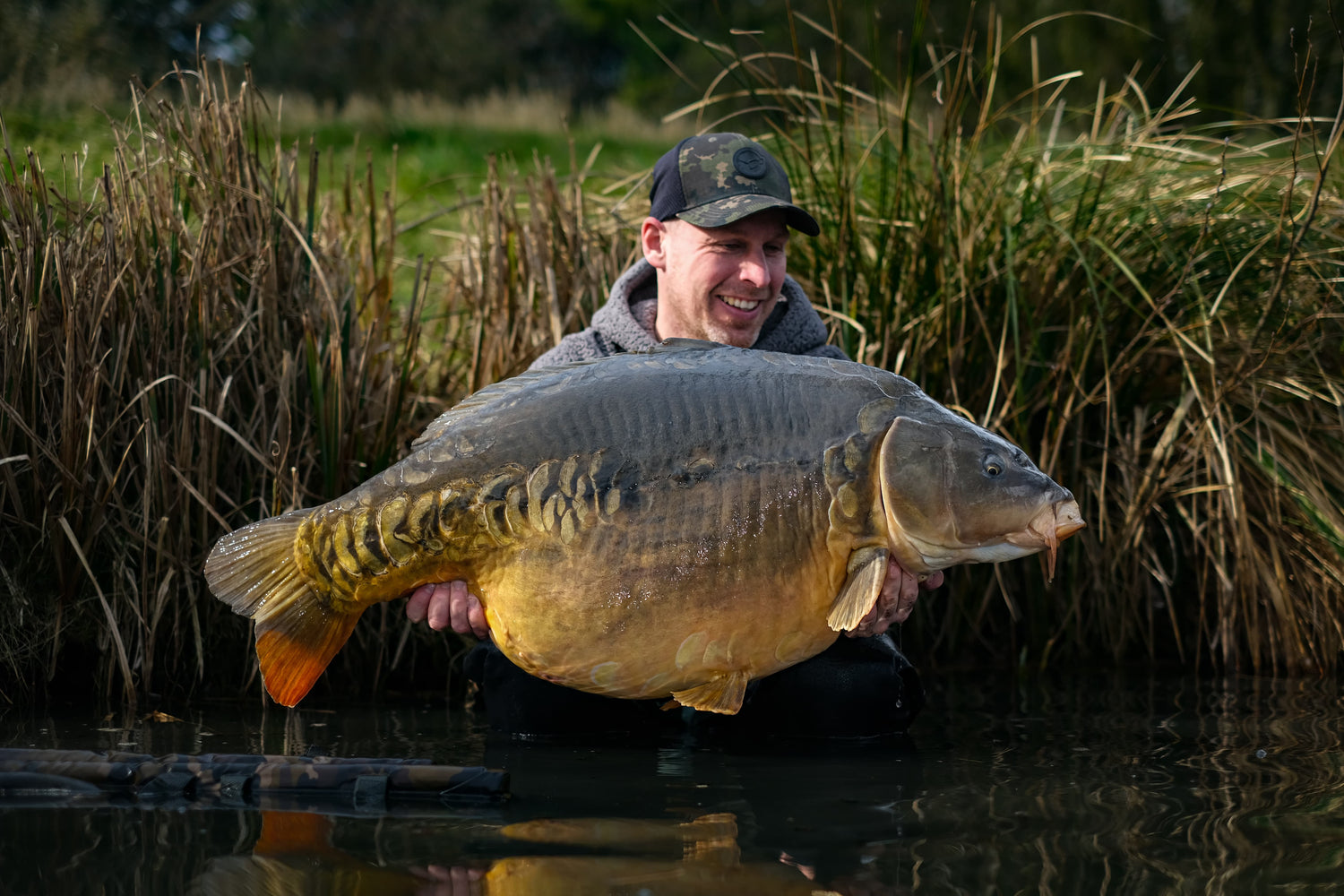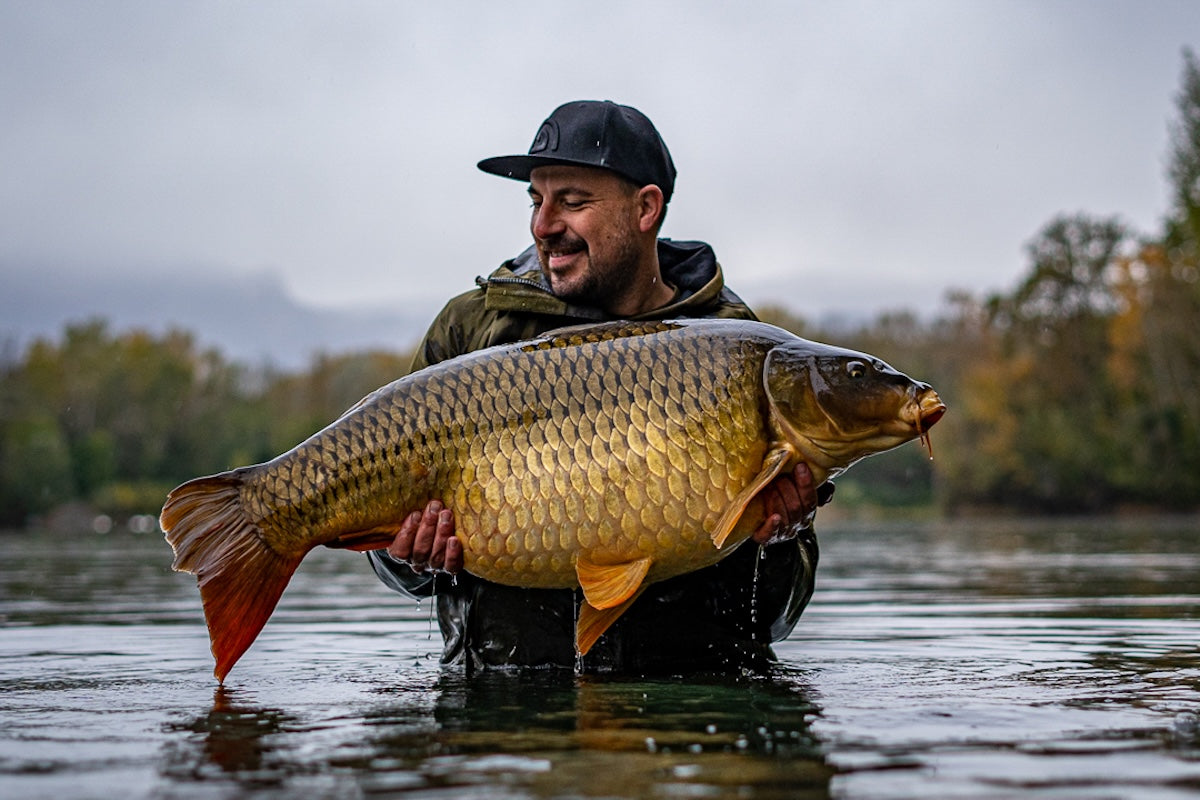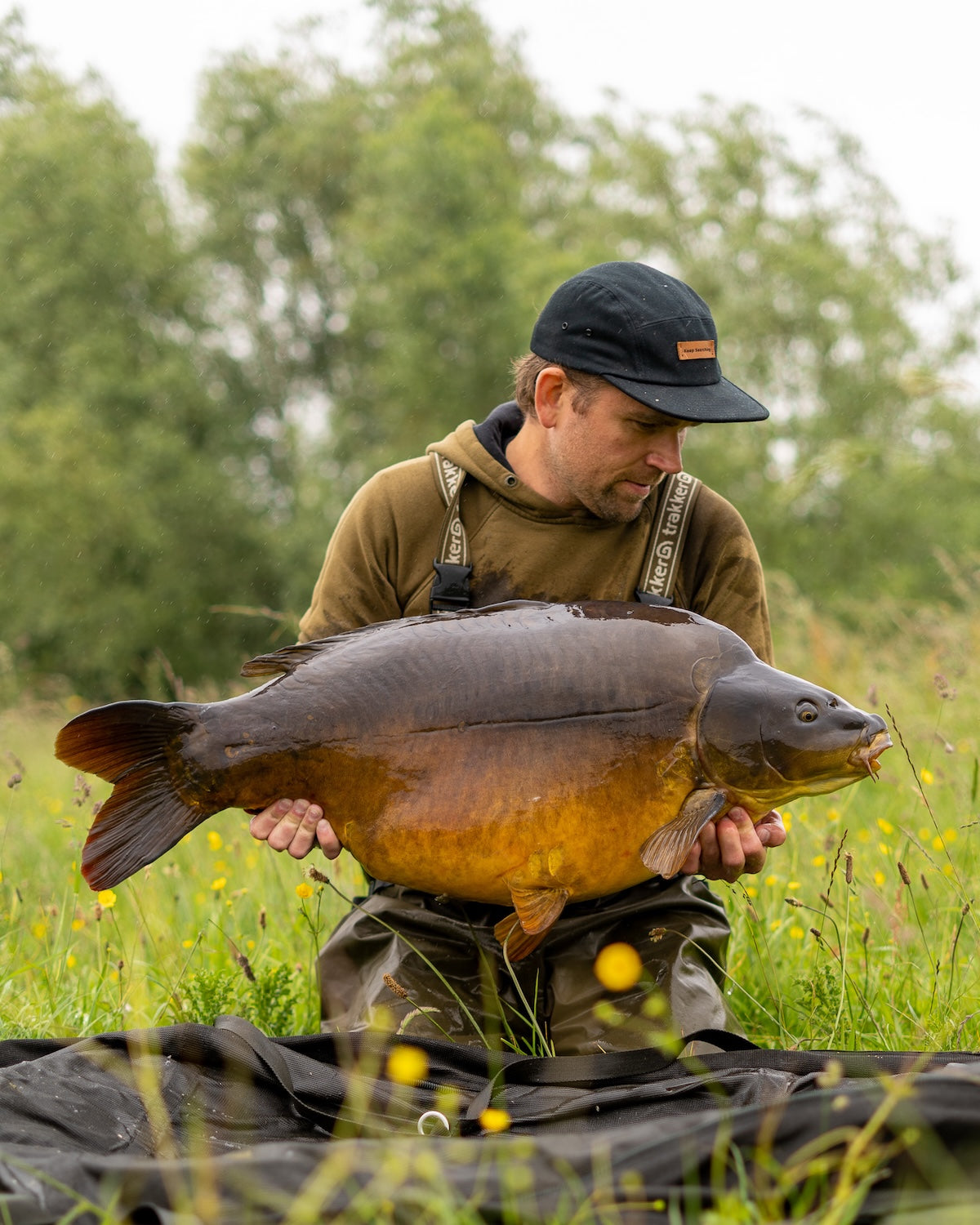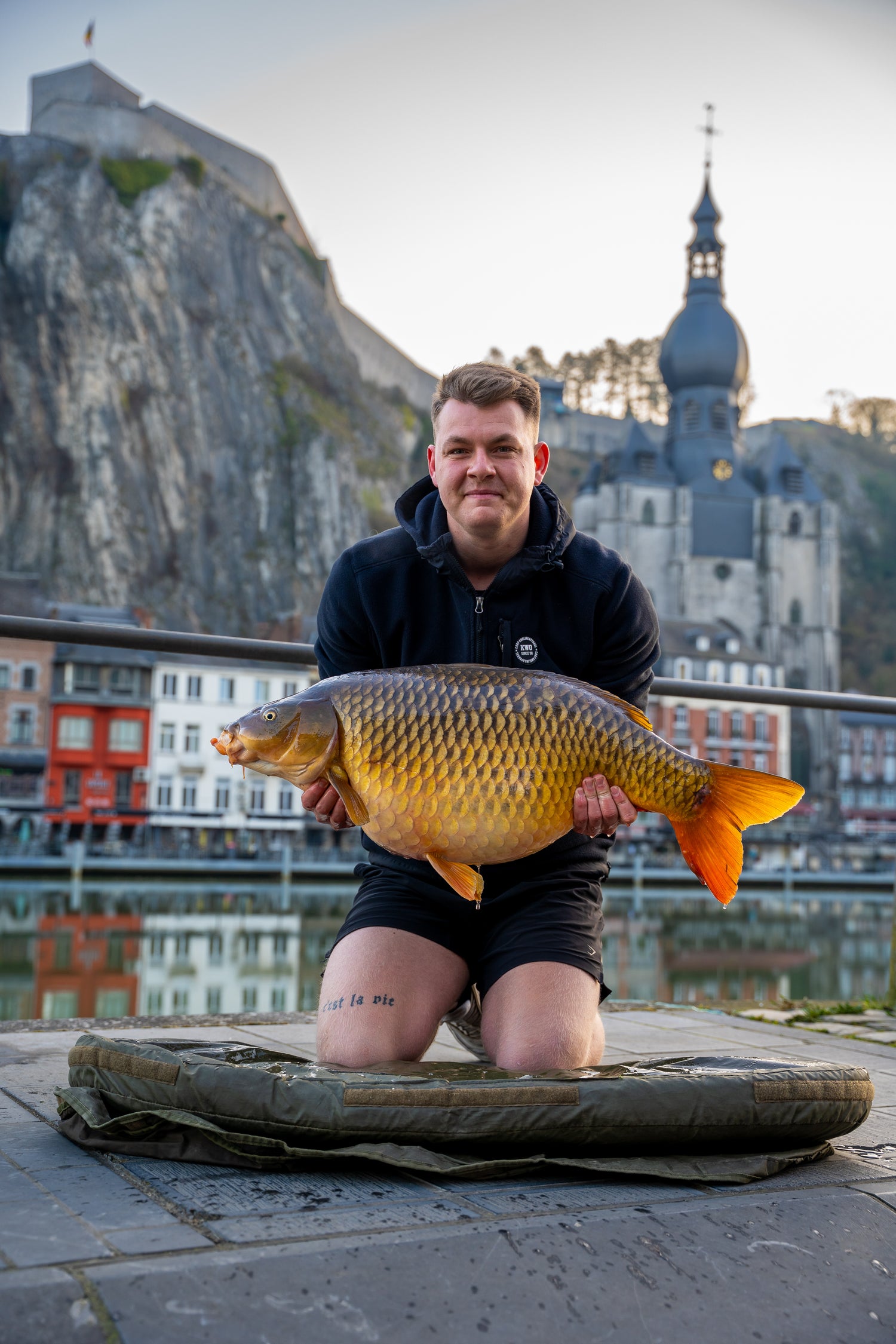Now for €44.99 I Normally €89.99
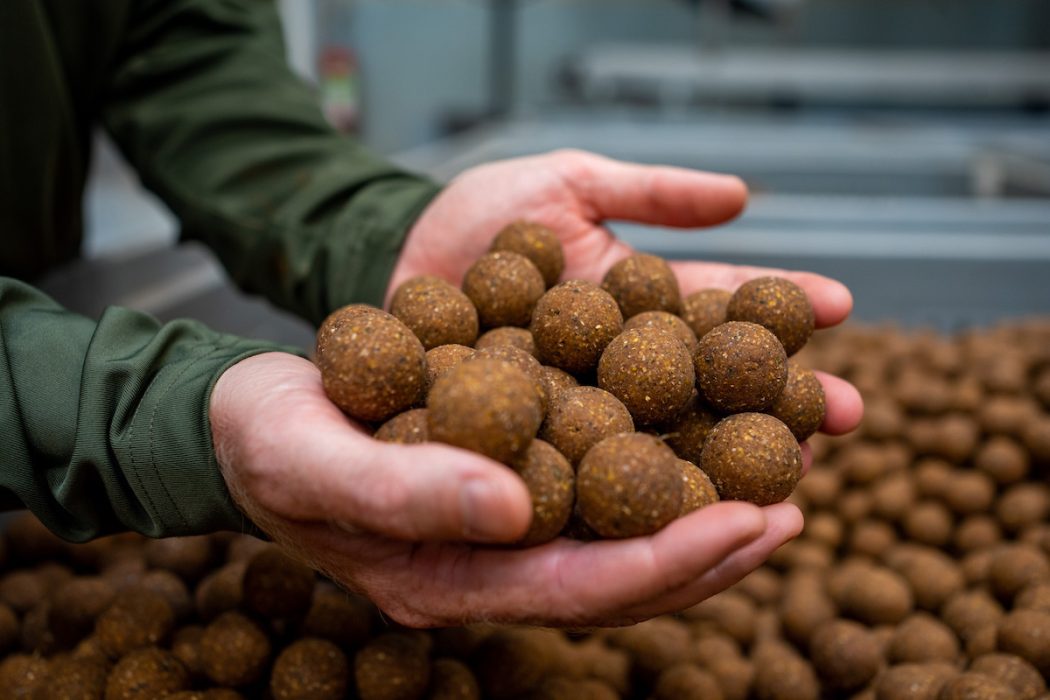
Dozens of brands, hundreds of varieties, flavors, and colors. It's so overwhelming. How do you ensure you're using the right boilie year-round? Mark Hofman will help you succeed!
Attraction
My fishing consists mainly of short sessions on many different waters. Therefore, I find it important that my boilies have instant attraction. The carp must quickly recognize the boilie as food and be stimulated to eat it. Therefore, it's important that the boilies release a lot of attraction and triggers into the water. My personal preference is for this attraction to come from natural ingredients rather than (from) synthetic flavors, for example.
That's why I prefer fishmeal. Fishmeal naturally contains many free amino acids and nucleotides. Both are big words that can get completely lost in the deep end. For now, the most important thing to remember is that fishmeal contains many attractive elements for carp. The advantage of these attractants is that they are also highly soluble in water, allowing carp to detect them from a great distance.
Another thing I appreciate is that a boilie offers a wide range of attractants. Consider, for example, a combination of different meals and liquids. My theory is that different attractants attract many different fish, so I often combine several varieties. But be careful: too many attractants can actually repel fish. For example, if a boilie contains 20% fishmeal, you can also divide that 20% among two or three varieties, so you don't necessarily have to increase that 20%!
If I am specific, then a Krill boilie my strongest preference. Number two is a boilie with Squid Both types of boilies have proven themselves over the past decades and catch fish on any water.
Nutritional value
While you can easily catch carp with "lean" boilies, I prefer to offer them sufficient nutritional value. The idea behind this is that the carp should feel good about their feeding (when I don't hook them). If it ultimately costs the carp more energy than they can get from the boilies, they'll eventually abandon them, in my opinion. And you can hardly go wrong with offering quality.
You can go into this topic in depth, but as a rule of thumb, I recommend that a boilie contains at least 15 to 25 percent protein. This often indicates that a boilie contains a significant amount of fishmeal.
Digestibility
Digestibility is about how quickly the carp can process the boilie and how much energy this requires. This becomes most important during the colder months when water temperatures drop below 12 degrees Celsius. In autumn, carp build up their reserves for winter. Therefore, their energy requirements are much lower during the colder months following autumn. They also move much less, so less energy is burned.
You can imagine that you don't need to feed "protein bombs" in that case. The carp would fill up quickly. Therefore, I choose a boilie with slightly less protein and fat and a bit more carbohydrates and fiber. This provides a quick snack for the winter carp that is easily digestible.
The rest of the season, carp are usually veritable feeding machines, so you don't have to worry too much about digestibility. Of course, the amount of boilies you feed does have a significant impact on whether the carp will fill up, but that's another story.
Hardness
I prefer a fairly tough, hard boilie, even though it's less attractive to carp. So why would I want to fish with one? In practice, attractants are harder to leak from a hard boilie, and carp have to work harder to digest it. Therefore, it's purely for practical reasons that I prefer using harder boilies in my fishing.
The reason is that I usually fish waters with crayfish and lots of whitefish. With a harder boilie, I'm sure it'll stay on the hair long enough for a carp to come along. Besides, I don't like feeding crayfish and bream. Harder boilies are more likely to be ignored (by these species), giving the carp more time to come to the spot. So, a little less attractive, but a bit more selective for carp and, unfortunately, sometimes catfish as well.
If I'm fishing mostly short, instant sessions or during the winter months, I'd choose a softer and therefore more attractive boilie. This allows you to determine what suits your fishing style best. Fishing with boilie paste is probably the most attractive, by the way.
Sweet boilies?
As you can read above, I prefer fishmeal because of its natural attraction. However, if you look in my bucket, you'll usually find a sweet boilie as well. I mentioned a wide range of attractants earlier, and a combination of 'sweet' and 'fish' helps! Sweet boilies can be a hit and are much more practical, for example, in waters with catfish. These "nasty eels" are much less fond of this, unlike fishmeal.
For me, a sweet boilie is more commonly used in instant fishing. It's harder to get a high protein content in a sweet boilie, so it's more of a tasty snack for carp. And let's be honest, a treat every now and then is simply irresistible!
Within the sweet spectrum of boilies, there are dozens of options, but my personal preference is for creamy, rich sweet boilies. Think Scopex and nuts. If only because I enjoy eating them myself.
Which boilies do I ultimately choose?
There are dozens of good boilies on the market that perfectly meet the above criteria. Choosing a boilie is therefore often a matter of trusting a particular brand or certain anglers who have had success. Once you choose a boilie, give it a good chance and don't change immediately after your first blank. I'm convinced that in 90% of cases, it wasn't the boilie that caused the fishless session. Think more about the choice of spot, the weather, the time of day, and so on.
Of course, I'm speaking for the converted, as I've developed a range of boilies for KWO, but here I find exactly what I'm looking for!
Mark
➡️ Krill Specials
➡️ Squid Specials
➡️ Scopex Specials


